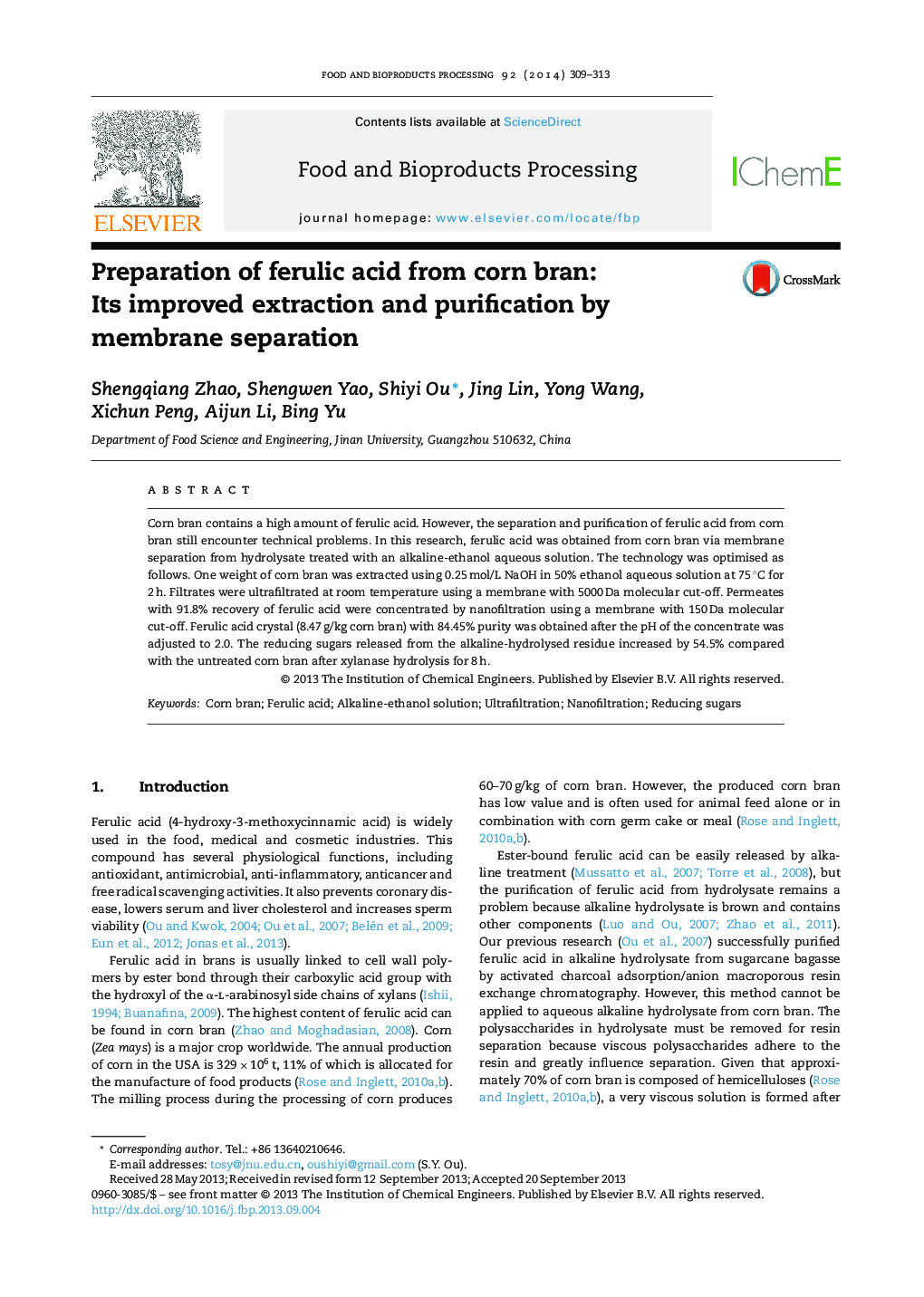| Article ID | Journal | Published Year | Pages | File Type |
|---|---|---|---|---|
| 19087 | Food and Bioproducts Processing | 2014 | 5 Pages |
•Ethanol was added to NaOH solution to produce a less viscous ferulic acid-containing hydrolysate from corn bran.•Nanofiltration after ultrafiltration was employed to concentrate ferulic acid.•Crystallisation of ferulic acid was performed by adjusting the pH to 2.0.•Compared with native corn bran, the residue after alkaline treatment was much easier digested by xylanase.
Corn bran contains a high amount of ferulic acid. However, the separation and purification of ferulic acid from corn bran still encounter technical problems. In this research, ferulic acid was obtained from corn bran via membrane separation from hydrolysate treated with an alkaline-ethanol aqueous solution. The technology was optimised as follows. One weight of corn bran was extracted using 0.25 mol/L NaOH in 50% ethanol aqueous solution at 75 °C for 2 h. Filtrates were ultrafiltrated at room temperature using a membrane with 5000 Da molecular cut-off. Permeates with 91.8% recovery of ferulic acid were concentrated by nanofiltration using a membrane with 150 Da molecular cut-off. Ferulic acid crystal (8.47 g/kg corn bran) with 84.45% purity was obtained after the pH of the concentrate was adjusted to 2.0. The reducing sugars released from the alkaline-hydrolysed residue increased by 54.5% compared with the untreated corn bran after xylanase hydrolysis for 8 h.
Graphical abstractFigure optionsDownload full-size imageDownload high-quality image (42 K)Download as PowerPoint slide
